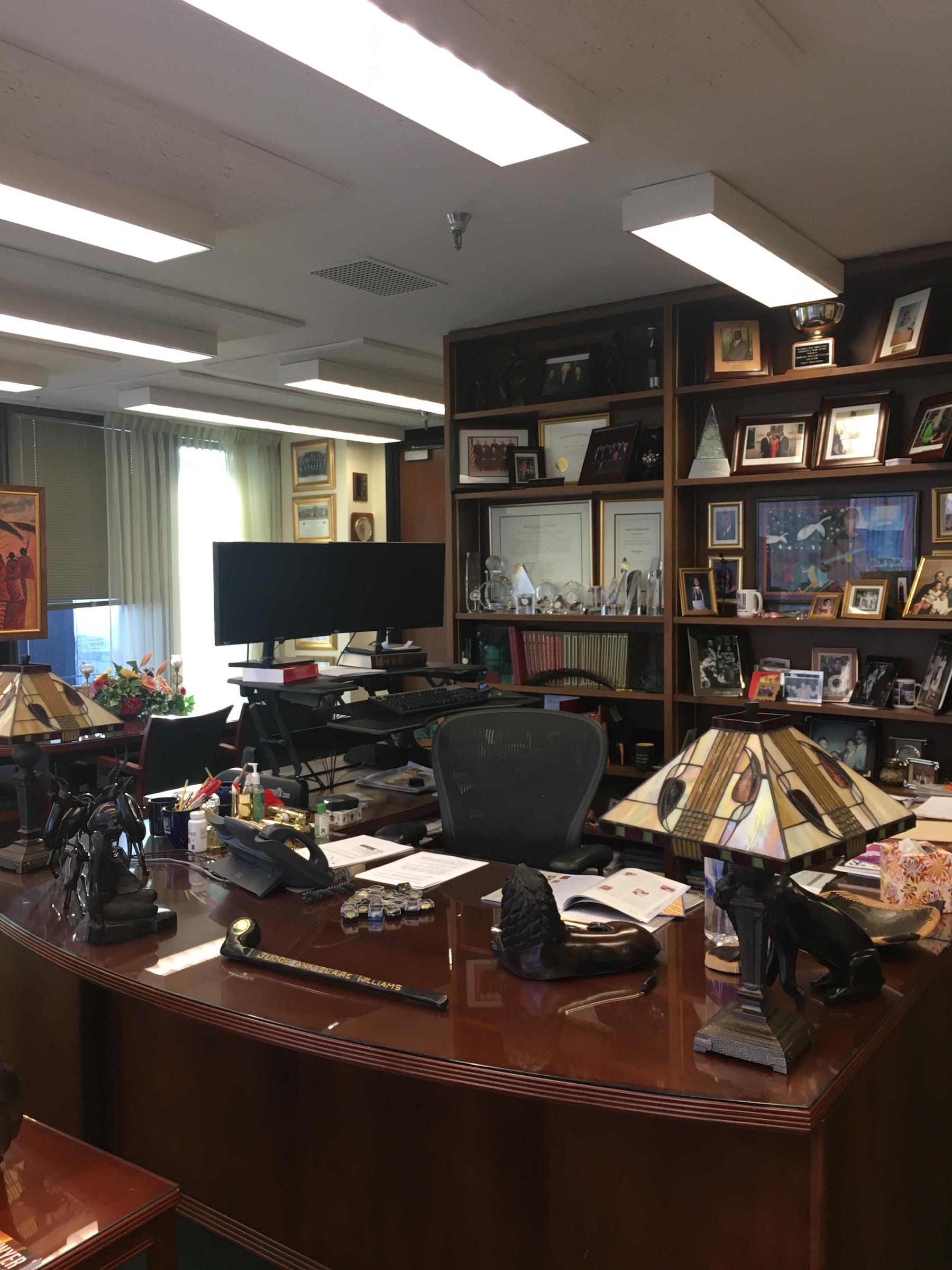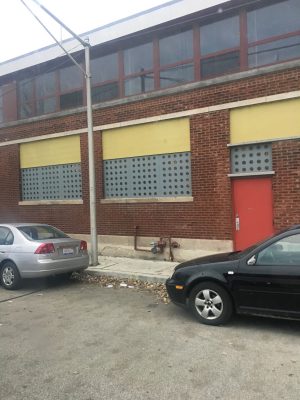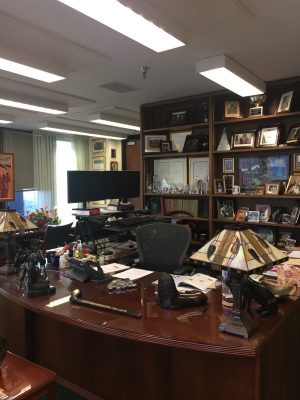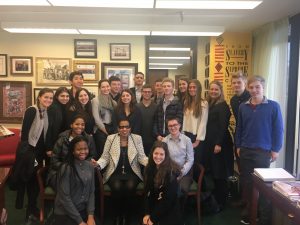Justice Calling!
Civil Liberties class visits Judge Ann C. Williams and Jamie Kalven to learn about social justice
“All rise,” the bailiff declares. Upper School History teacher Jeanne Barr, the 19 students in her Civil Liberties class, including myself, and others in the Seventh Circuit courtroom rise as the 12 judges enter the courtroom. Not an empty seat is in sight as people squeeze into the leftover spaces on benches, hoping to get a good look at the attorneys fighting for their clients. The doors swing shut, and the trial begins.
On November 30, Barr’s Civil Liberties class took a field trip to the the Seventh Circuit Court on Dearborn to meet Judge Ann C. Williams and watch the trials of “U.S. v. Johnson” and “Hively v. Ivy Tech.” Later that day, we met with journalist Jamie Kalven at the Invisible Institute to discuss his article investigating the Chicago Police Department published on October 6 called “Code of Silence.”
Before we went on this field trip, I wondered what my experience would be like at the Seventh Circuit Court and the Invisible Institute. I wanted to meet judges to learn more about the intricacies of their career paths and be inspired by their life stories.
Our class participated in two moot courts prior to visiting the Court, and I was eager to see the correlations — from argument style to interactions between the judges and the attorneys — between our moot courts and the Seventh Circuit trials.
Learning about the importance of our civil liberties was knowledge that I wanted to display in my journalism work as well. I hoped that Kalven would preach this value to us later in the day.
When we enter Williams’s chambers, a standing desk is surrounded by multiple seating areas. To the right of the standing desk, book shelves cover the wall, forming a rich mosaic of family photos, certificates, honors, and books.
Each wall expresses a different facet of her life. One tells of her international efforts to educate attorneys, law students, and judges about topics in law, ranging from constitutional law to legal reform. The countries she has helped educate include Kenya, Liberia, and Ghana.
Williams says that whenever she wanted to give up, she always remembered the people who had put their lives before hers. Even though her father had a college degree, he became a bus driver to provide the best support for Williams. Her mother tried to use her college degree for that same purpose.
Looking back, I see Williams’s message to us was that true grit is the essence of success. The way she answered our questions about amendments, Supreme Court decisions, and quandaries within the legal system so fluent and confident that it empowered me. I was inspired by her work to enforce social justice in Chicago and beyond.
After we exited Williams’s chambers, we went to watch the deliberation of the “U.S. v. Johnson” and “Hively v. Ivy Tech” cases.
In “Hively,” a woman argues that she is not given a full-time position at Ivy Tech Community College because she is a lesbian woman. This is a landmark case for the LGBTQ community because if the district court rules in favor of Hively, it would prevent discrimination based on sexual orientation in the selection of an employee.
“U.S. v. Johnson” will determine whether the police had reasonable suspicion to search a car that allegedly violated a Chicago parking rule.
In “Hively,” we listen to arguments grounded in one’s right to love to former Supreme Court cases such as “Price Waterhouse v. Hopkins” and “Baldwin v. Foxx.” The justices leaning towards the attorneys and effortlessly delivering a persuasive argument while the attorneys bolster their arguments back is an enthralling tug-of-war. There is something intangible about witnessing judges debate that is difficult to replicate in moot courts and court simulations.
These same features are present during “U.S. v. Johnson,” and make practicing law even more exciting and appealing in my eyes.
To end our excursion, we visited Kalven at the Invisible Institute. When we were initially driving to the Institute, I didn’t notice it, as it’s hidden on a side street of Hyde Park. Upon entry, we saw a garage full of bikes, and a set of stairs that led to a conference room where Kalven was sitting patiently with a stack of his newest work: “Code of Silence.”
“Code of Silence” is a 20,000 word, four-part piece that highlights the relationship between the police and their suspects. In “Code of Silence,” the police would collect taxes from the sales of drug dealers, and in exchange, the drug dealers would be protected from the law.
Kalven strives to contribute to the regeneration of journalism and democratic practice. He believes that the “Code of Silence” in the police is a trending cultural phenomenon that highlights the ongoing corruption of the Chicago Police Department.
Prior to reading Kalven’s article, I didn’t realize how corrupt the political landscape of the police department was. I would think about what inventions people could make to ensure a fairer police system or how police officers and suspects could build peaceful relationships. Now I understand that some of these police-suspect relations can be muddled in dirty business.
Kalven talked about people being in a media hall of mirrors that prevents them from realizing societal and world events because they are so absorbed in different media sources that can be corrosive.
Kalven has no specific audience with “Code of Silence.” From jails to Soho House, the 40,000 copies of his article have been delivered all over the Chicago area.
Aside from learning more about the inner workings of the police department, I also realized how powerful journalism can be to provoke discussion and action on social injustice. Not only does it spread knowledge to different parts of the public, but it also has a profound effect on the way we think and feel about the world around us.
This field trip as a whole was a brilliant way to culminate the knowledge my classmates and I had learned through U.S. History and Civil Liberties, as it allowed us to reflect so deeply on the cultures that we had been studying.















